Our last trip took us to the holiday region of Upper Lusatia, located in eastern Saxony. Here, in the border triangle between Germany, Poland, and the Czech Republic, diverse landscapes awaited us, including picturesque river valleys, charming villages, magnificent buildings, medieval towns, and consistently warm hospitality. Upper Lusatia is known for its diversity and relaxed atmosphere. Whether you’re looking for relaxation in nature, want to explore historic towns, or discover cultural highlights, you’ll find everything your heart desires here. In the following article, we’ll take you on our journey through Upper Lusatia. Enjoy browsing!
- Upper Lusatia Holiday Region
- The Sorbs and their Culture
- Upper Lusatia Sights & Highlights
- 1. The medieval town of Bautzen
- 2. Upper Lusatian Heath and Pond Landscape Biosphere Reserve
- 3. Rakotz Bridge in Kromlau
- 4. Muskau Park & Muskau Castle
- 5. Muskau Arch
- 6. Muskau Forest Railway
- 7. Twin Cycle Path
- Hotel Recommendations
- Arrival in Upper Lusatia
- Conclusion on Upper Lusatia in Saxony
Upper Lusatia Holiday Region
Upper Lusatia is located in the eastern part of Germany and extends over parts of the federal states of Saxony and Brandenburg. Geographically, Upper Lusatia lies between the rivers Elbe in the west and Neisse in the east. The Upper Lusatia holiday region is still a little insider tip for anyone seeking untouched nature, cultural treasures, and a relaxed country life. Incidentally, the city of Bautzen is often considered the center of Upper Lusatia. The picturesque landscape of Upper Lusatia is characterized by rolling hills, lush forests, clear lakes, and idyllic river valleys. There are numerous hiking and cycling trails that lead you to many great places in Upper Lusatia. The Zittau Mountains with their striking rock formations and the Upper Lusatian Heath and Pond Landscape Biosphere Reserve are popular destinations for outdoor activities. The historic cities of Bautzen and Görlitz are also particularly popular. The lovingly restored old towns with their charming half-timbered houses, magnificent churches, and historic squares convey a sense of the region’s rich cultural history. Not to be forgotten are the museums, galleries, and events, which offer interesting insights into Sorbian customs and traditional crafts.
The Sorbs and Their Culture
The Sorbs are a Slavic ethnic group, primarily residing in Upper Lusatia. They settled the region around 1,400 years ago. Today, an estimated 50,000 Sorbs still live in the entire settlement area—two-thirds of them in Upper Lusatia.
If you are traveling in the region, you will certainly notice the bilingual place, street, and building signs, as the Sorbs have their own language. They also have a rich cultural tradition, which is reflected in their folklore, traditional costumes, music, and traditions.
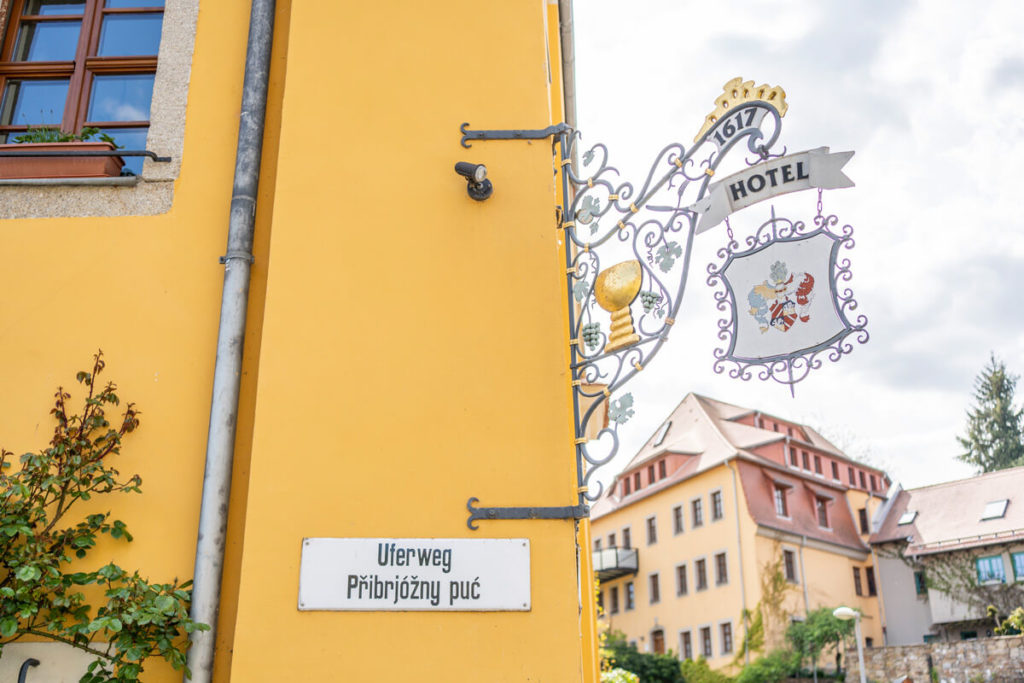
Traditional Sorbian festivals include the Easter Riding, in which riders in traditional clothing ride through the villages and bless Easter eggs. The Sorbs are a recognized national minority in Germany and enjoy certain protected rights.
The promotion and preservation of Sorbian culture is also an important aspect of Sorbian community life. There are also Sorbian schools, media, and cultural institutions that help keep Sorbian culture alive. You can read more about the Sorbs and their culture here: Sorbs in Upper Lusatia.
Upper Lusatia Sights & Highlights
Upper Lusatia awaits you with a rich history, picturesque landscapes, and a variety of sights. From medieval towns with well-preserved old towns to imposing fortresses and castles and breathtaking natural areas – Upper Lusatia has a number of highlights to offer. In the following chapter, we’ll show you some of the most beautiful sights in Upper Lusatia.
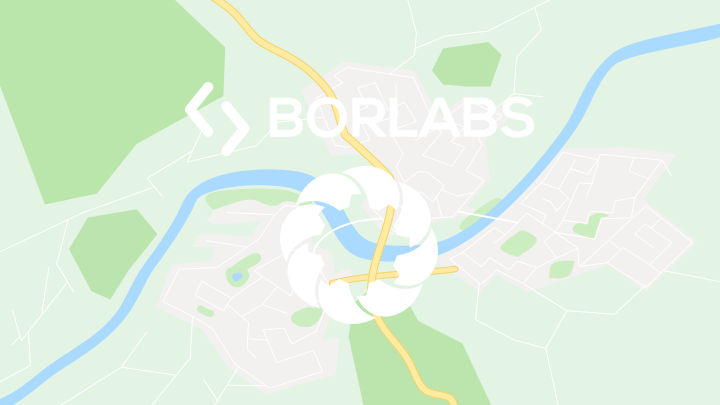
By loading the map, you accept Google’s privacy policy.
Learn more
Load map
1. The medieval town of Bautzen
Our journey through Upper Lusatia began with the beautiful town of Bautzen, which, with almost 40,000 inhabitants, is the second-largest town in the region after Görlitz. Bautzen looks back on a history spanning over a thousand years, and this can be experienced in many places throughout the city. The historic architecture and the very well-preserved old town make Bautzen a very charming and attractive town. Bautzen is also often referred to as the “City of Towers” because it has 17 towers that characterize the cityscape.
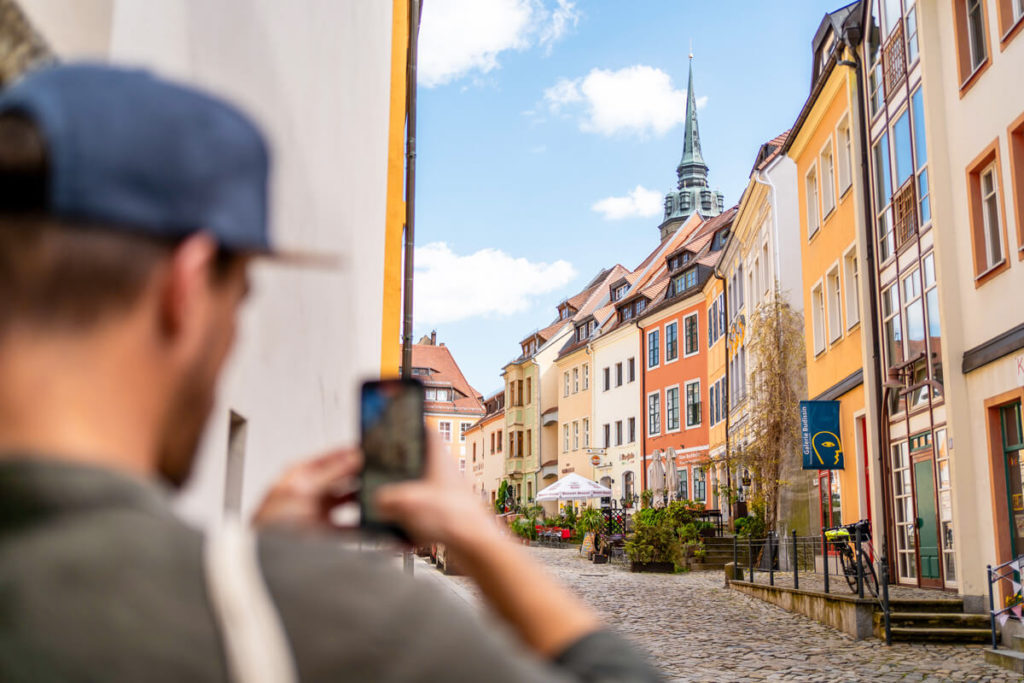
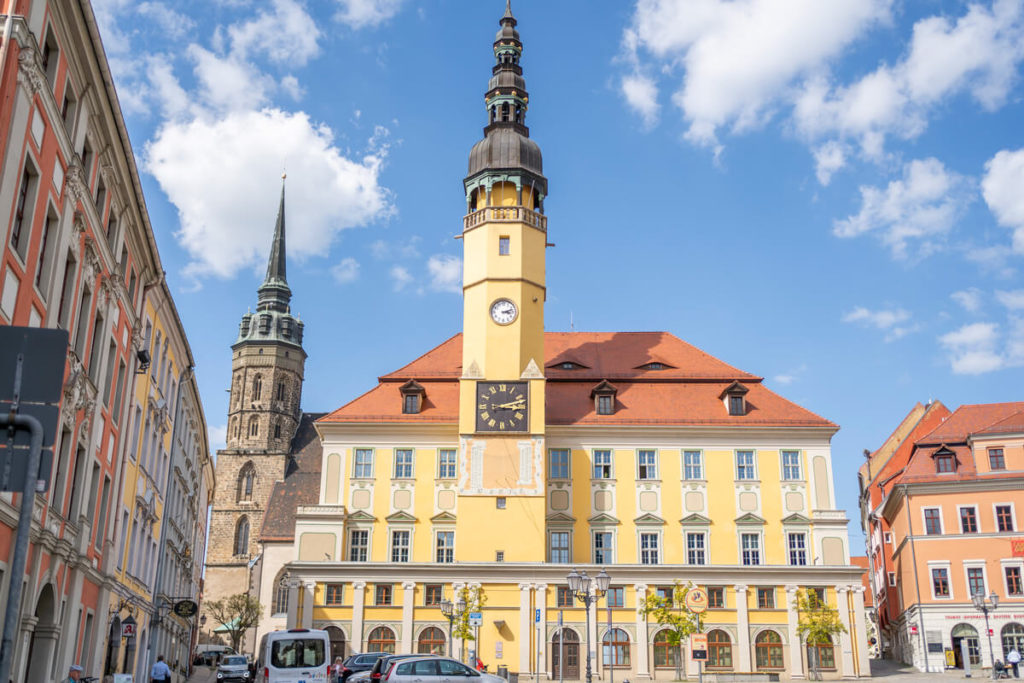
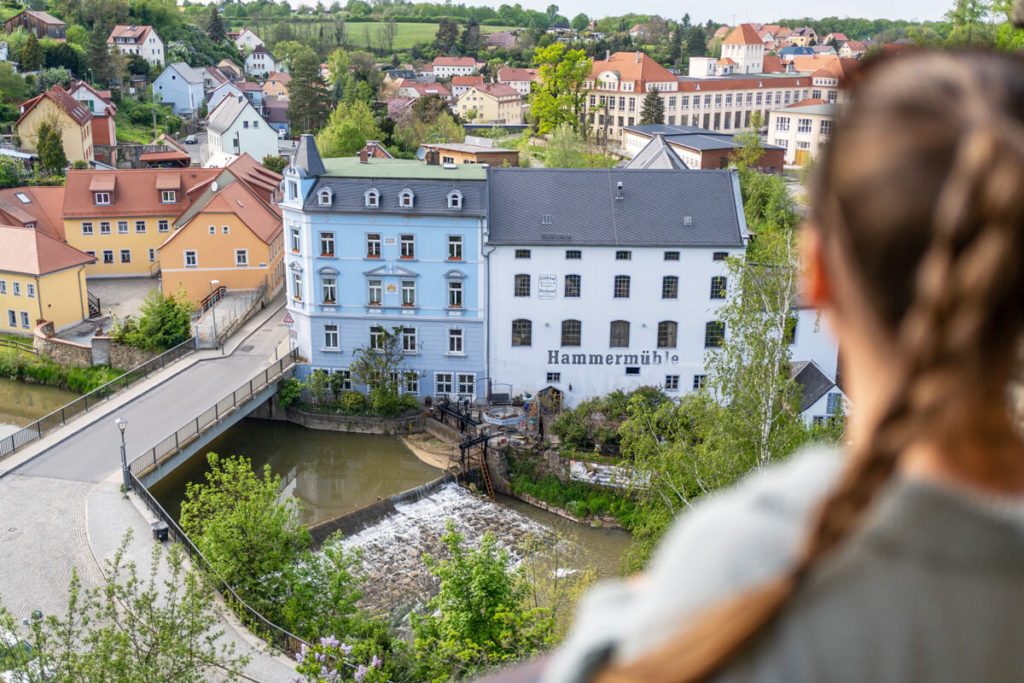
During a leisurely stroll through the alleys and streets, we discovered Bautzen’s diverse sights. These included the mighty Ortenburg Castle, Bautzen Cathedral, magnificent town houses, impressive city walls, the historic Old Waterworks, the Witch’s House, the Hammermühle, and the ruins of St. Nicholas Church. The most beautiful view can be found from the Peace Bridge, which spans the Spree and connects the old town with the Gesundbrunnen district.
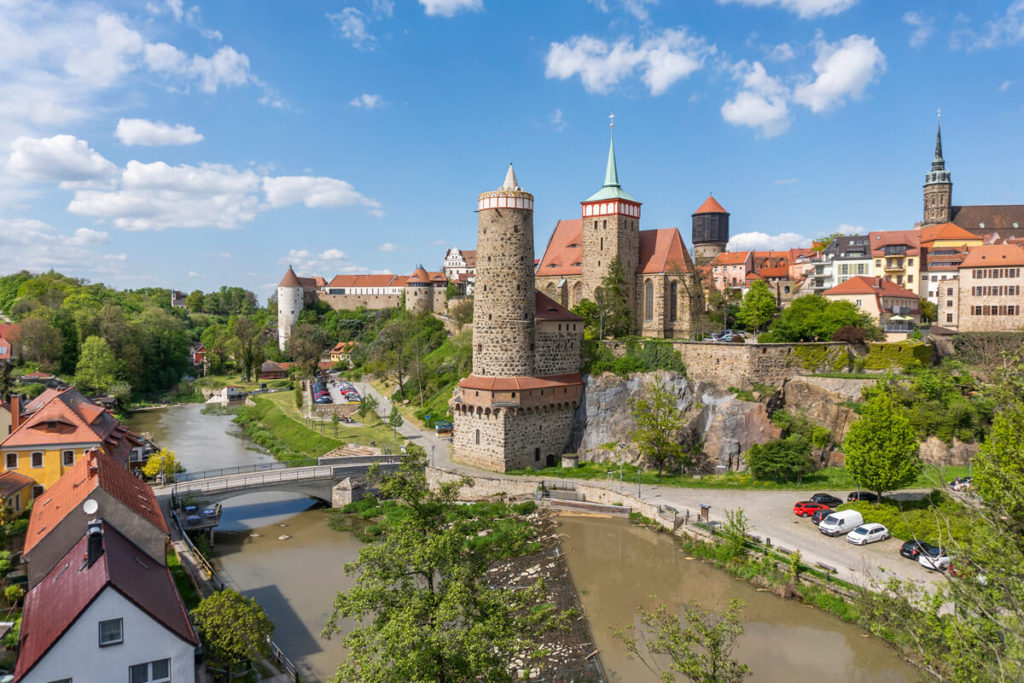
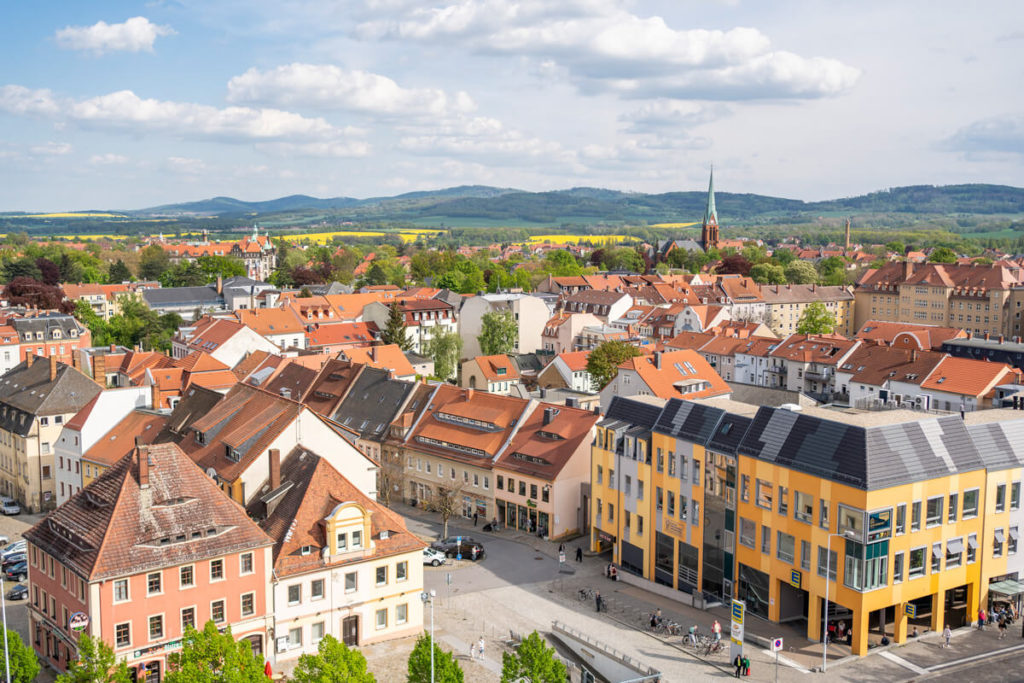
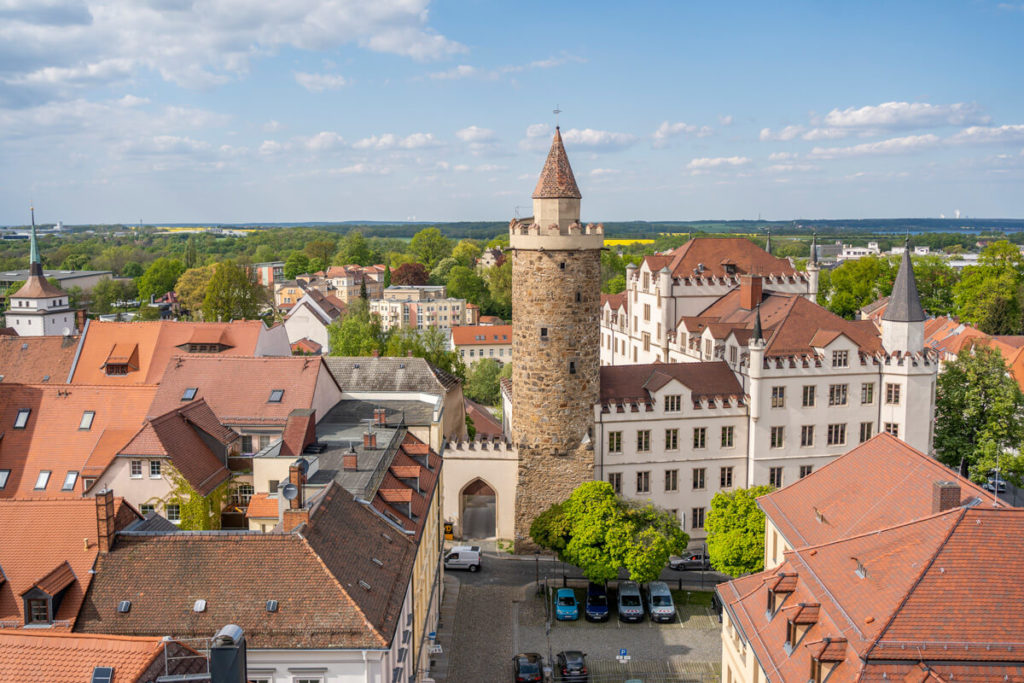
Restaurants & Cafés in Bautzen
In Bautzen, there’s not only a lot to see but also a lot to taste. We can recommend, among others, the Bautzener Senfstube, located in the heart of the old town. There, you’ll be impressed by the versatility of the yellow grain. How about mustard soup, mustard schnitzel, mustard ice cream, or perhaps mustard roast? This restaurant also offers “normal” traditional cuisine. Also popular are the Mönchshof, Haseneck, Alter Bierhof, and the Sorbian restaurant Wjelbik.

If you’re just craving a super-delicious pizza or pasta, you should head to the Pizzeria Trattoria Da Gelo. For a snack, we recommend a stop at Evi’s Deko & Café. Here you’ll find not only incredibly delicious cakes, small tarts, and coffee, but also pretty decorative items. The charming Goliath Café serves homemade cakes and coffee, as well as a fantastic breakfast menu. We were also recommended the “Ice Cream Dealer,” which offers unusual ice cream flavors.

2. Upper Lusatian Heath and Pond Landscape Biosphere Reserve
From Bautzen, we cycled 23 km to the “House of 1000 Ponds” (via the twin cycle path). This information center is located in the heart of the UNESCO Upper Lusatian Heath and Pond Landscape Biosphere Reserve. On our way there, we drove through many small villages, such as Quatitz, Großdubrau, Brehmen, Klix, and Lömischau. The last stretch to the House of 1000 Ponds was particularly beautiful, as the path led through the biosphere reserve with its many ponds, heathlands, moors, rivers, and forests.
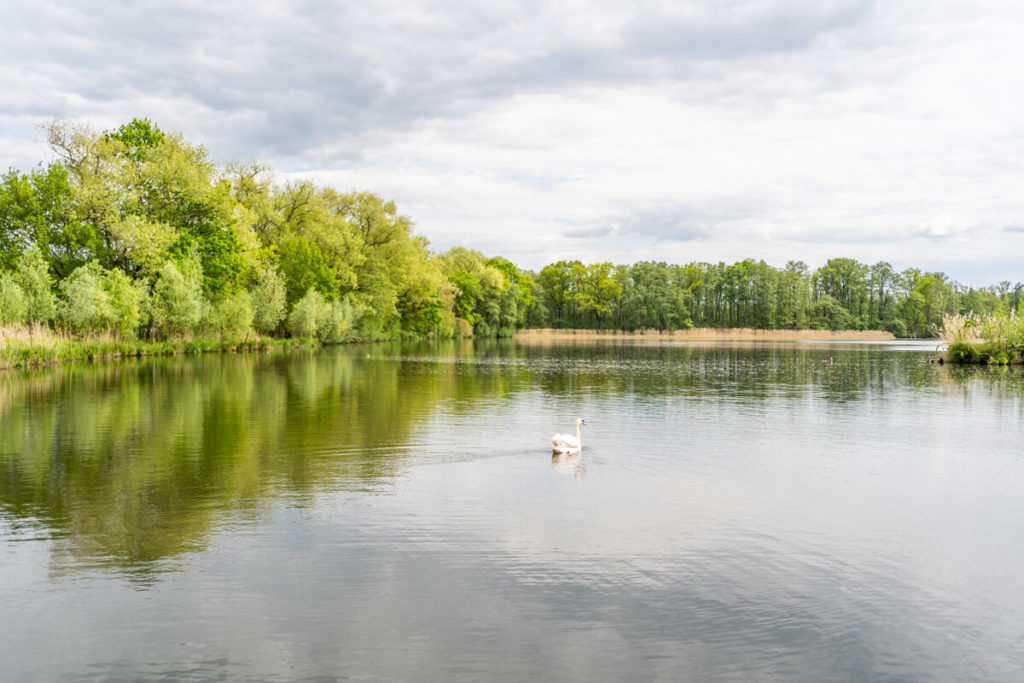
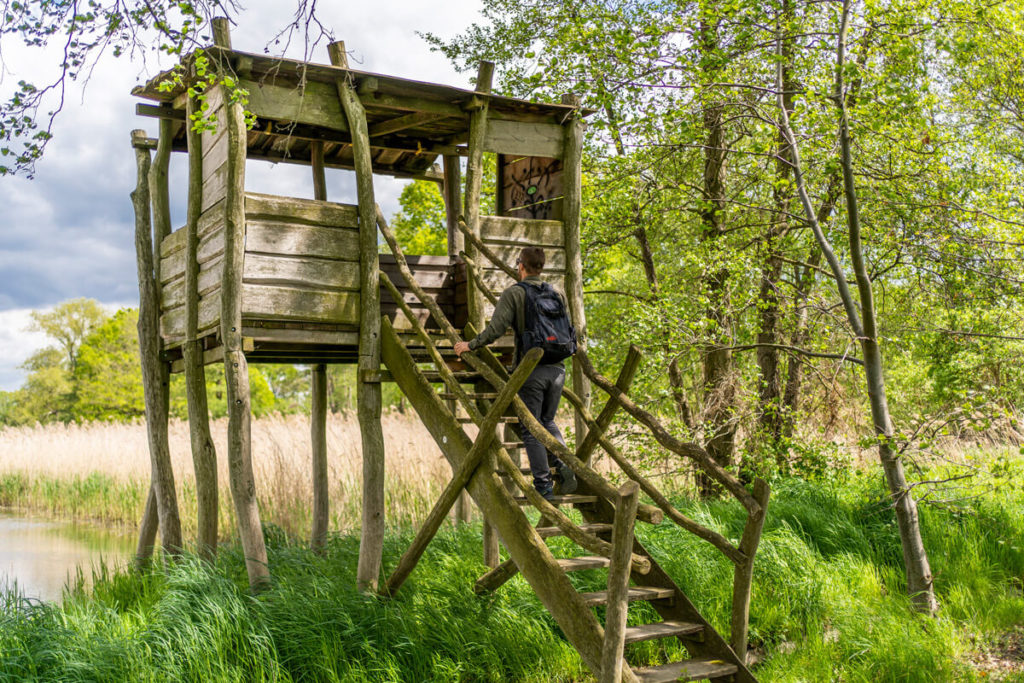
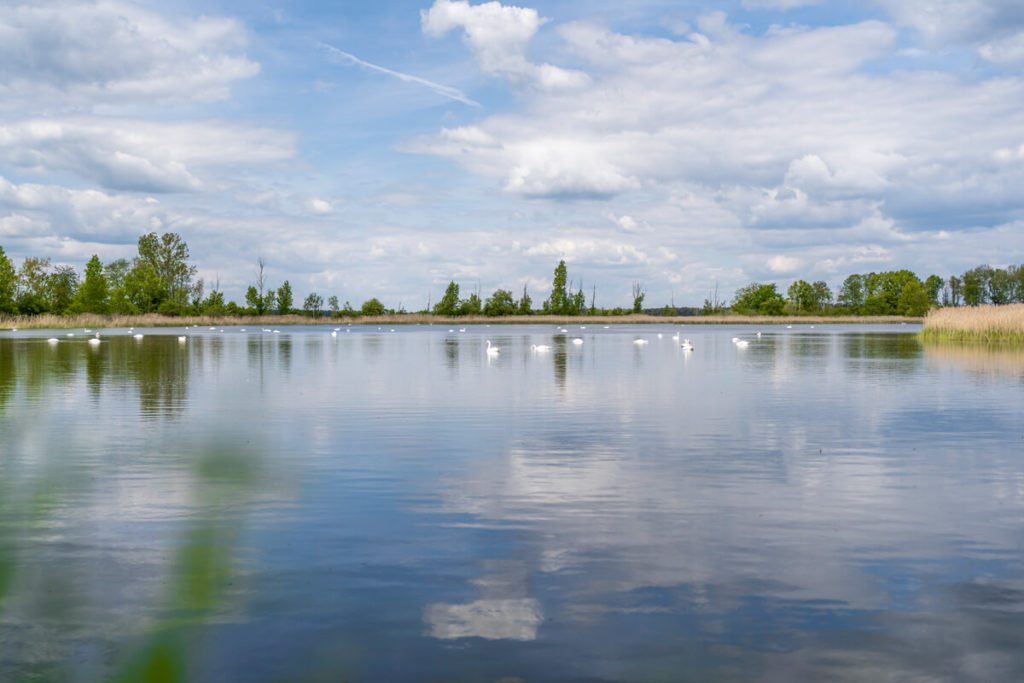
The reserve has been the 13th UNESCO Biosphere Reserve in Germany since 1996 and part of the largest contiguous pond area in Central Europe. Over 5,000 plant and animal species can be found in this region. The reserve is also the largest breeding area for the white-tailed eagle in all of Germany. This beautiful bird of prey was threatened with extinction just 20 years ago. Deer, wolves, otters, cranes, bats, bitterns, red kites, grass snakes, wild boars, foxes, and badgers also occur in this region. Be sure to pack your binoculars!
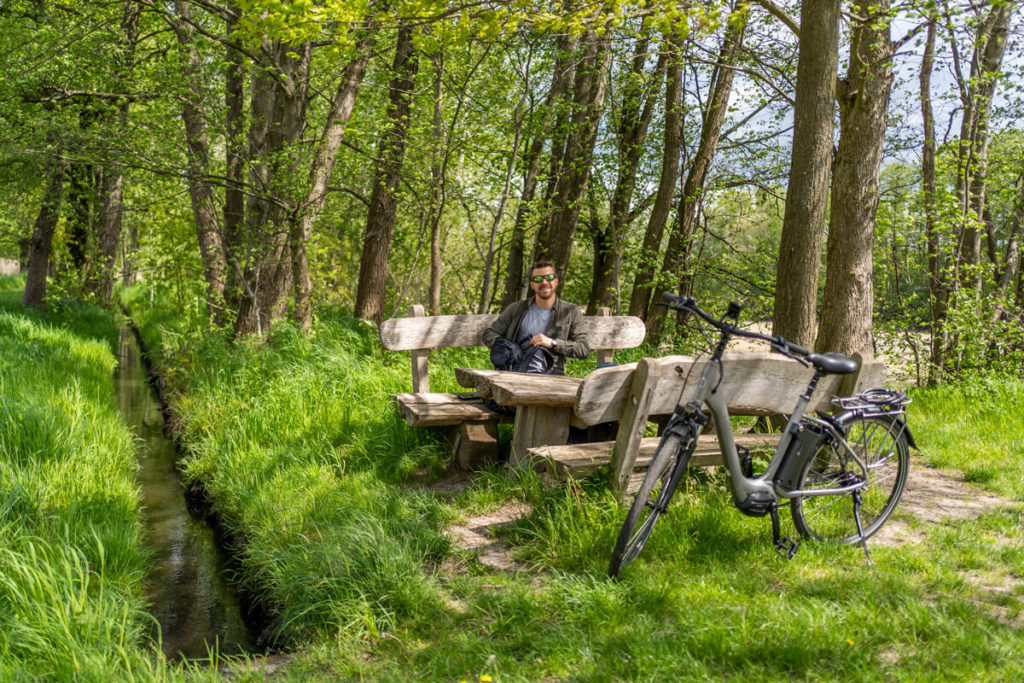
The main goal of the biosphere reserve is to protect and preserve natural habitats and promote sustainable development measures. It serves as a model region for environmentally friendly land use, pond management and fish farming, as well as sustainable tourism. We recommend a visit to the House of 1000 Ponds, as it has a great exhibition where you can learn more about all these topics. The information center is open daily from 9 a.m. to 5 p.m. from February to December.
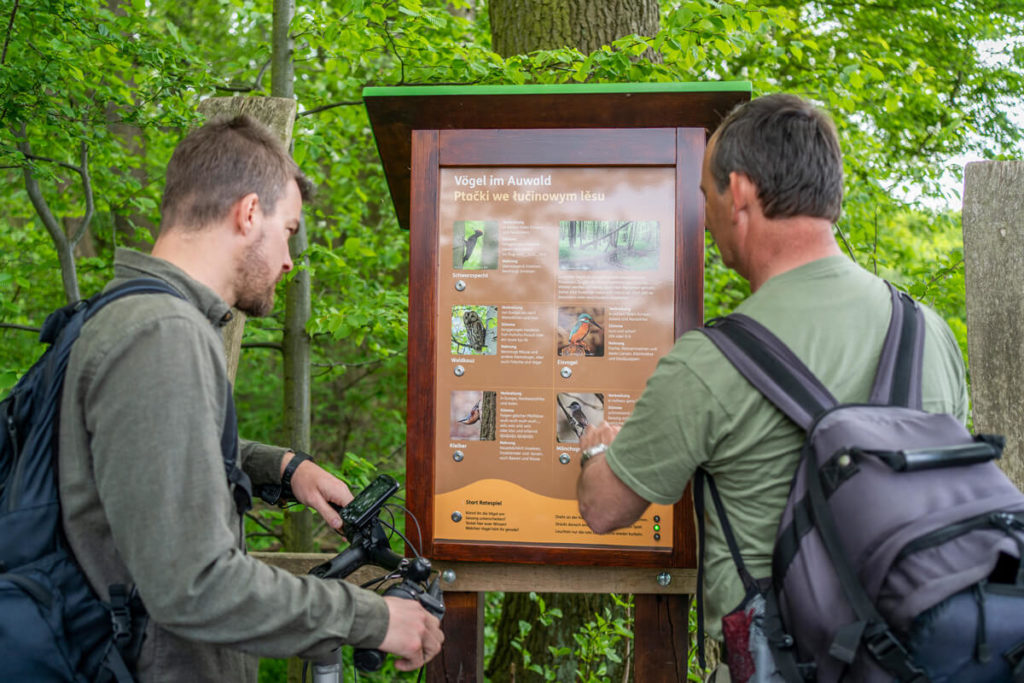
3. Rakotz Bridge in Kromlau
Another highlight of our trip through Upper Lusatia was the detour to the Rhododendron Park Kromlau. This park, also known as “Kromlau Park”, is distinguished by its large collection of rhododendrons and azaleas and is known for its picturesque landscape and architectural features. Kromlau Park covers an area of approximately 200 hectares and was created in the 19th century. Before exploring the park, you can indulge in homemade cakes and gateaux at the Café Azalee.
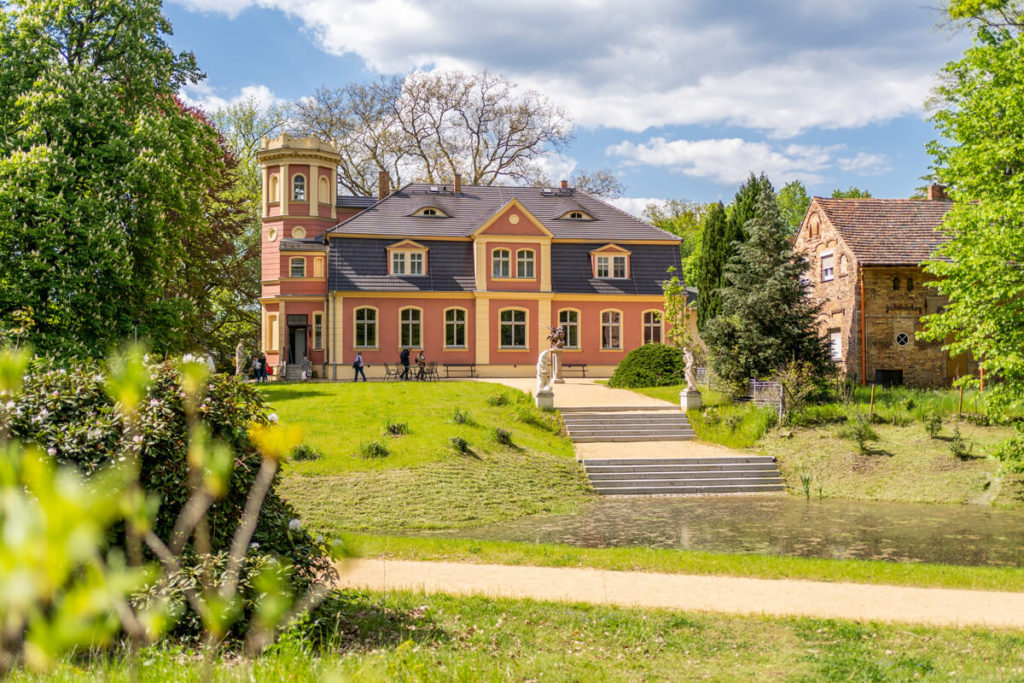
The Kromlau Rhododendron Park is not only a great destination for photography enthusiasts, but also a popular destination for walks, picnics, and relaxation. There are benches and rest areas to enjoy the atmosphere and the view of the landscape. During spring and early summer, the rhododendrons and azaleas bloom in the park, transforming it into a colorful paradise. The main attraction of the Rhododendron Park, however, is of course the famous Rakotzsee lake with its striking 35-meter-long Rakotz Bridge, which creates a reflection in good wind and water conditions and is a very popular subject for photographers.
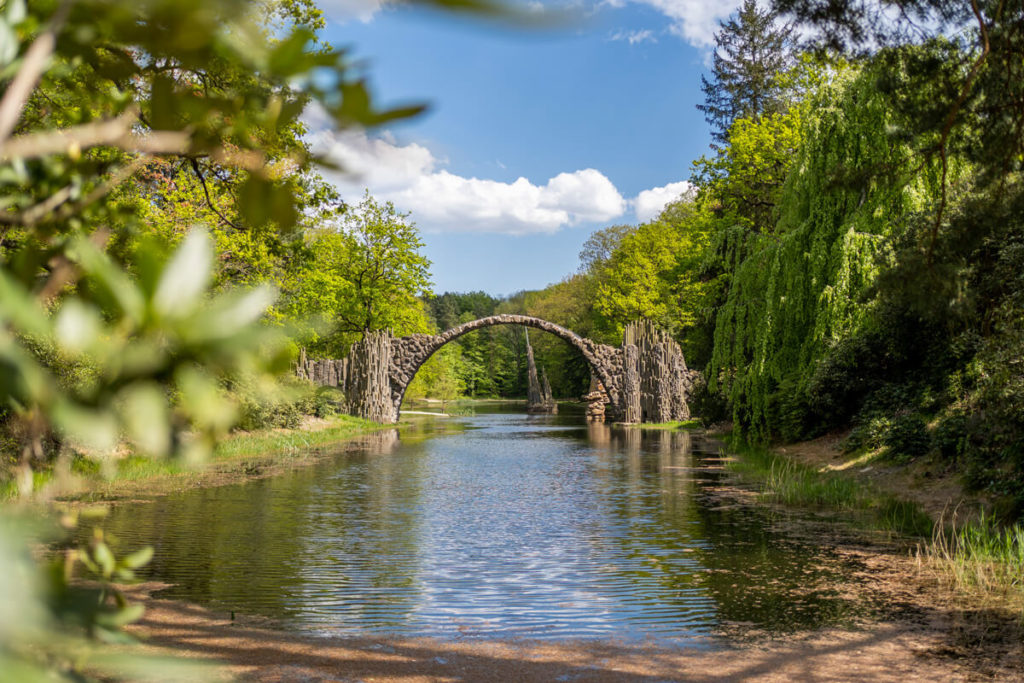
4. Muskau Park & Muskau Castle
Our journey continued from Kromlau to Bad Muskau. Here, of course, we visited the beautiful Muskau Park, also known as Prince Pückler Park. This is a landscape park stretching across the border between Germany and Poland, designed by the German Prince Hermann von Pückler-Muskau in the 19th century. The planning and design of the park took several decades. The prince had a vision of an English landscape garden that would combine the natural beauty of the surroundings with architectural elements and garden art.
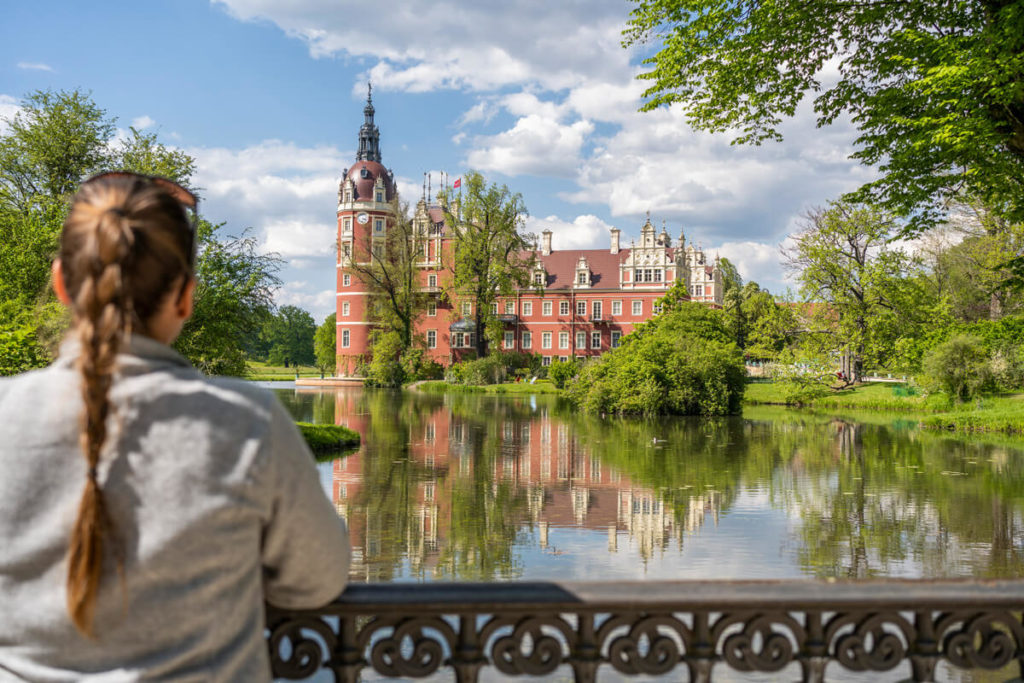
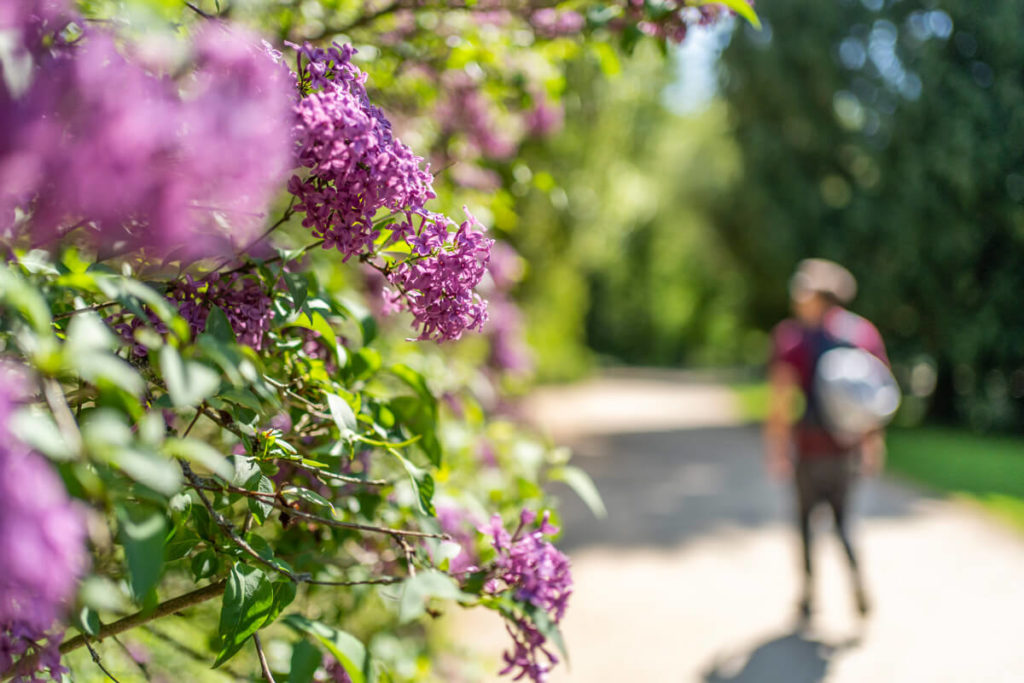

UNESCO World Heritage Muskau Park
Muskau Park has been a UNESCO World Heritage site since 2004 and covers an area of approximately 830 hectares. It is also considered one of the most beautiful landscape parks in Europe. Wow! Numerous ponds, forests, meadows, and stunningly beautiful gardens await you in the park itself. The park’s striking features include the Neisse River, which flows through the park, and the bridges that connect its two banks. The New Palace, located on the German side of the park, is also a must-see. Take a look at the exhibition on the history of the castle and then enjoy the beautiful view from the castle tower.



Information: You can see the exhibition from Open daily from 10 a.m. to 6 p.m. from April 1 to October 31, 2023. The castle tower houses an interesting permanent exhibition focusing on the birthplace of the famous park’s creator. From there, you can also climb to the viewing platform, where you have a fantastic view of the park. Admission to the exhibitions and the tower climb costs €10 for adults. Admission to Muskau Park is free. It can also be visited 24/7.
5. Muskau Fold Arc
In the Brandenburg-Saxony-Poland triangle lies the so-called Muskau Fold Arc. This was a gigantic glacier that crushed the subsoil and piled up enormous masses of earth (a terminal moraine). Seen from the air, the landscape resembles a large horseshoe. Deep-lying rocks and minerals, such as brown coal and ceramic clay, also reached the surface in this way. Humans naturally took advantage of this and, between 1840 and 1970, developed numerous underground and open-pit brown coal mines in the region, as well as glassworks and ceramic industries. Today, the many mines are filled with water and form a densely wooded natural area with significant ecological diversity. Various hiking and cycling trails lead through the area.
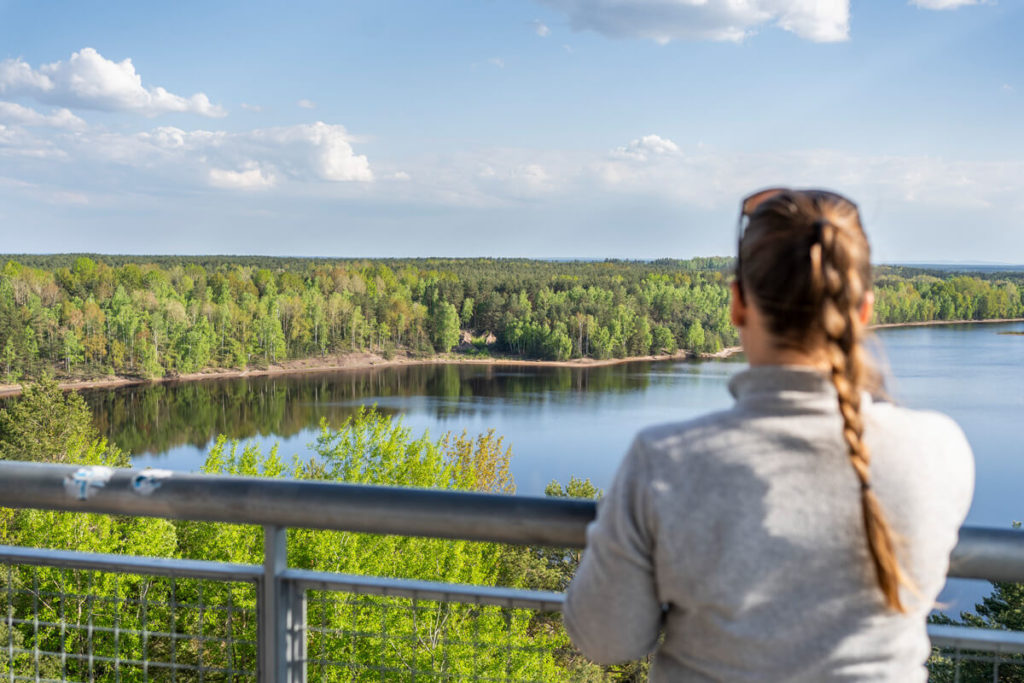
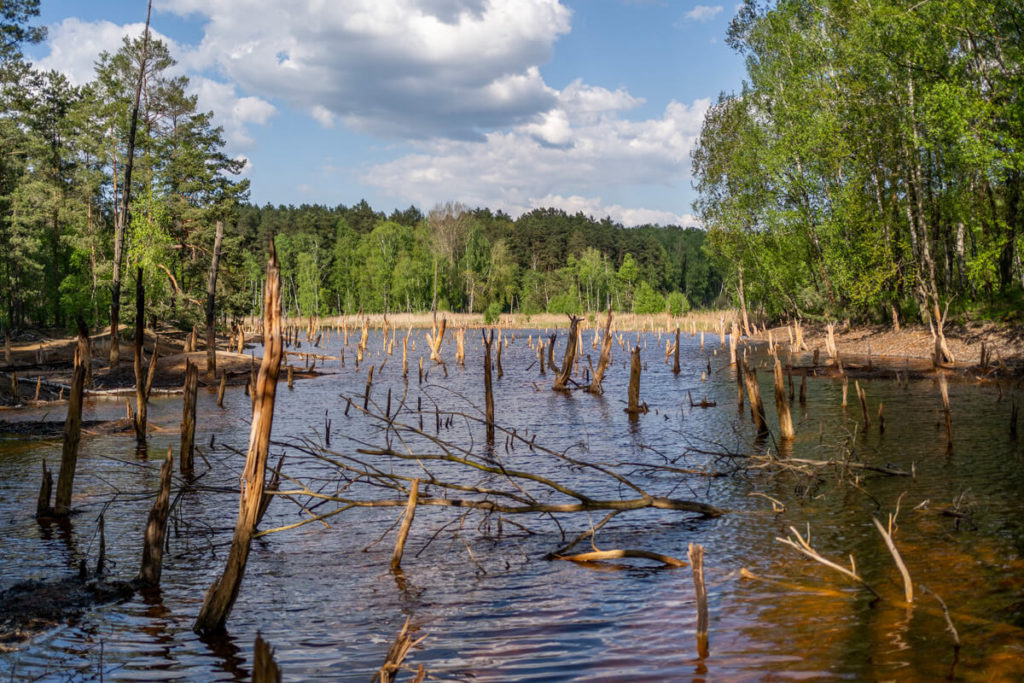
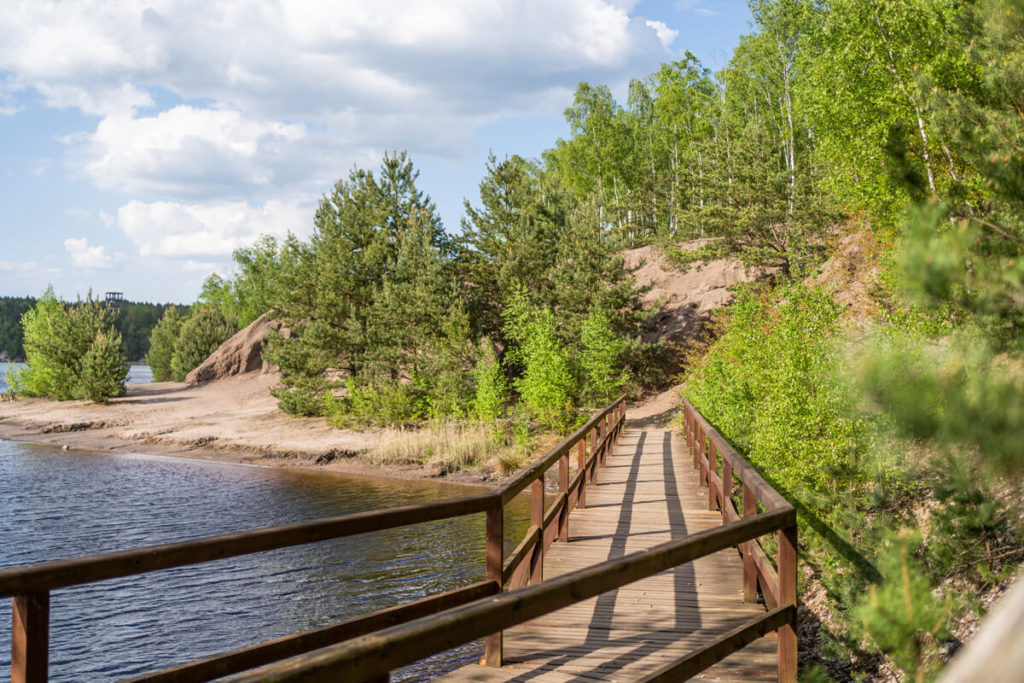
On the Polish side of the Muskauer Faltenbogen Geopark on the outskirts of Łeknica (“Geopark Łuk Mużakowa”), a geotourism trail of the former Babina mine has been created. Here you can see the remains of the brown coal mining and enjoy the constantly changing landscape with numerous colorful lakes.
At some points, we had the feeling of being in the middle of the Scandinavian wilderness. Large information boards along the 10 km long route provide important background information about the former underground and open-cast mine. The view from the wooden Observation tower at the largest body of water in the post-mining lake “Afryka”.
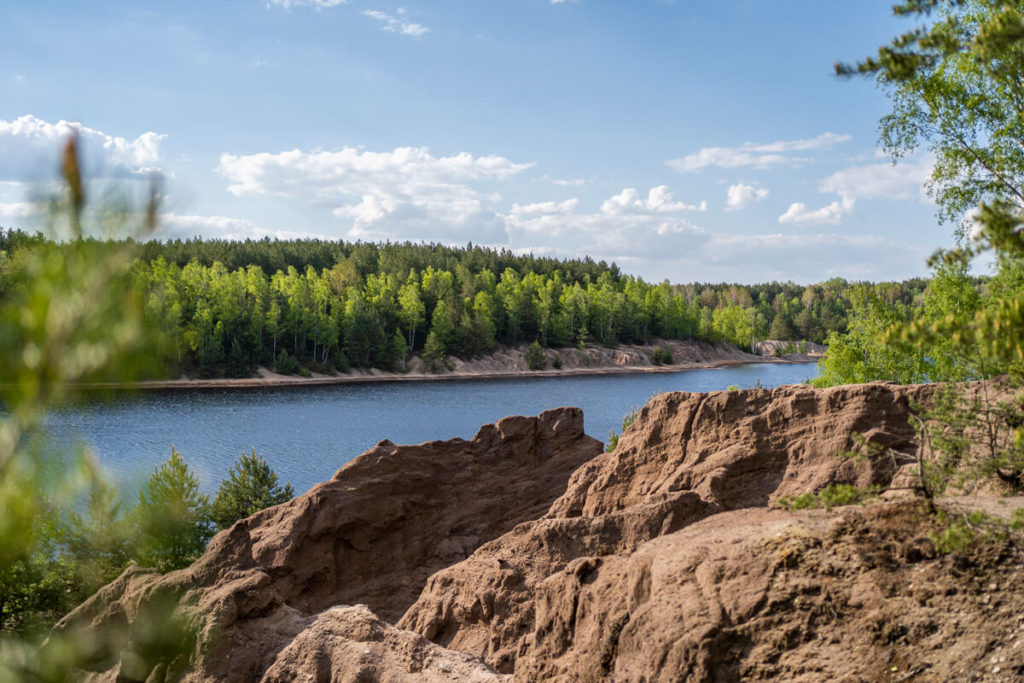
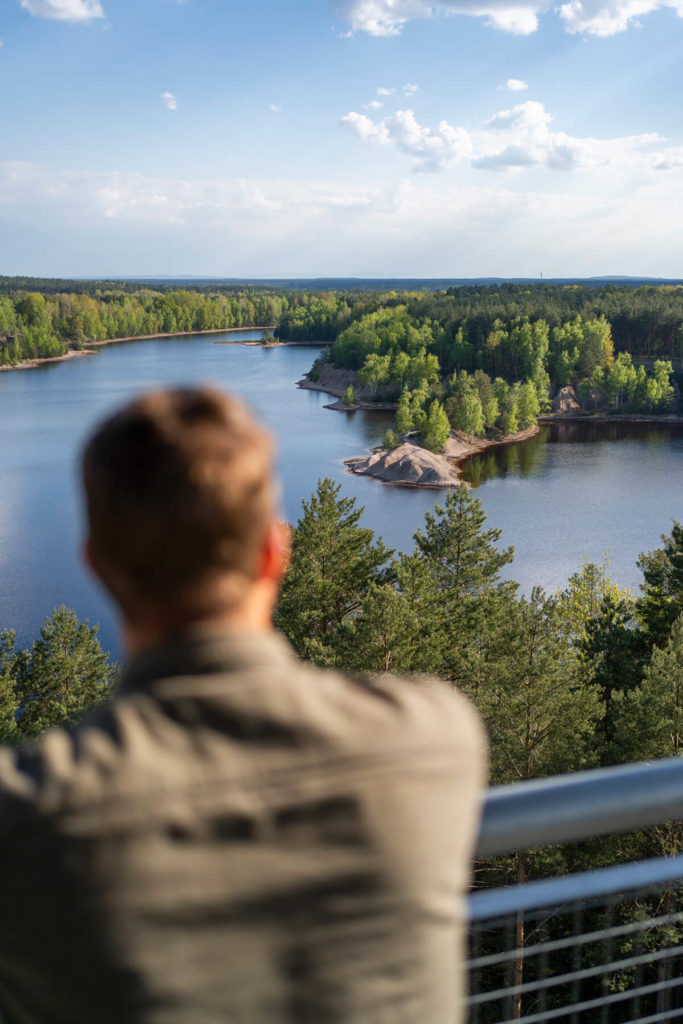
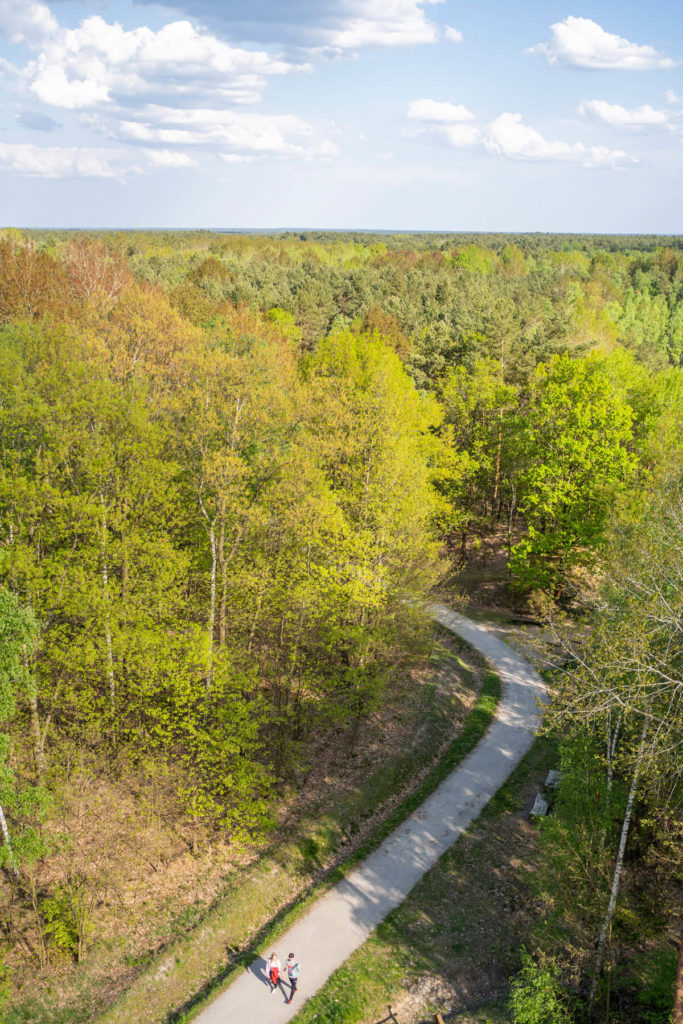
6. Muskau Forest Railway
If you are in Bad Muskau or the surrounding area, we highly recommend a ride on the Forest Railway. This nostalgic narrow-gauge railway was used for over 90 years to transport raw materials and finished products. Today, the museum railway brings numerous tourists to the popular landscape parks of Kromlau and Bad Muskau every year. The starting point of the Muskau Forest Railway is Weißwasser station, where there is a small adventure playground and a restaurant. At the “Anlage Mitte” museum station, you can also view around 20 historic locomotives and learn more about the history of the railway.
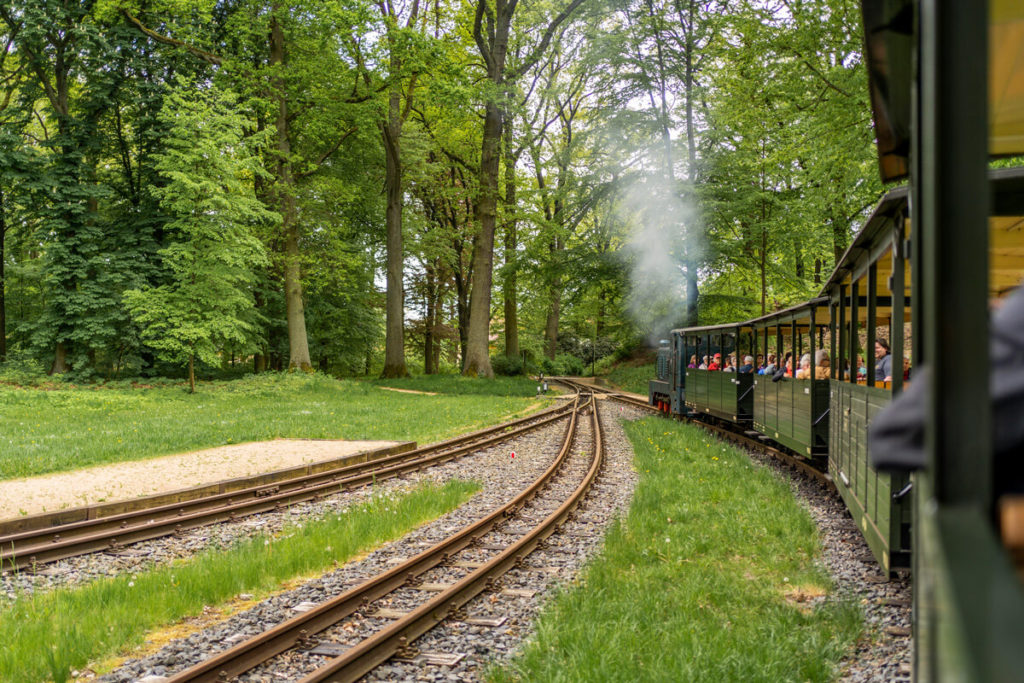
We traveled on a quaint diesel locomotive on the route from Bad Muskau to Weisswasser. Here, we learned that special trips are also offered regularly, for example, on Halloween, Christmas, or Whitsun. You can find all departure times on the Muskau Forest Railway website. Tickets for adults start at just €6 (children start at €4) and can be purchased on-site from the conductor (tickets for special events are also available online). Strollers, bicycles, and wheelchairs can also be transported. Even your beloved furry friends can come along for free and enjoy the breeze.
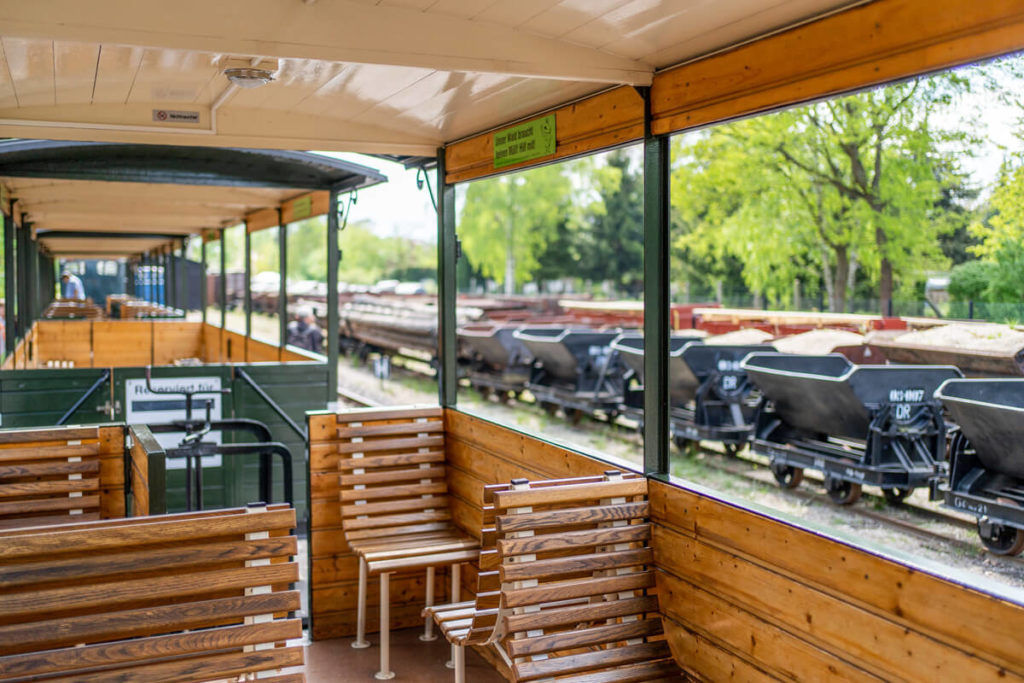
7. Twin Cycle Path
The Twin Cycle Path is a popular circular cycle route in Upper Lusatia and stretches a total length of approximately 275 kilometers. It is a combination of the Oder-Neisse Cycle Route and the Spree Cycle Route and connects the cities of Görlitz, Zittau, Bautzen, and Bad Muskau, among others. The circular cycle route runs along the Neisse Valley, which forms the border between Germany and Poland. While cycling along the twin cycle paths, you can enjoy the picturesque landscape of Upper Lusatia. You will pass traditional half-timbered houses, green meadows, forests, ponds, lakes, and river landscapes, among other things. The cycle path also offers insights into the culture and history of the region, as various historical buildings such as castles, churches, and museums await you along the route. We cycled approximately 100 km on this cycle path. You can find out more about the route at Outdooractive and also on the Upper Lusatia region’s website.
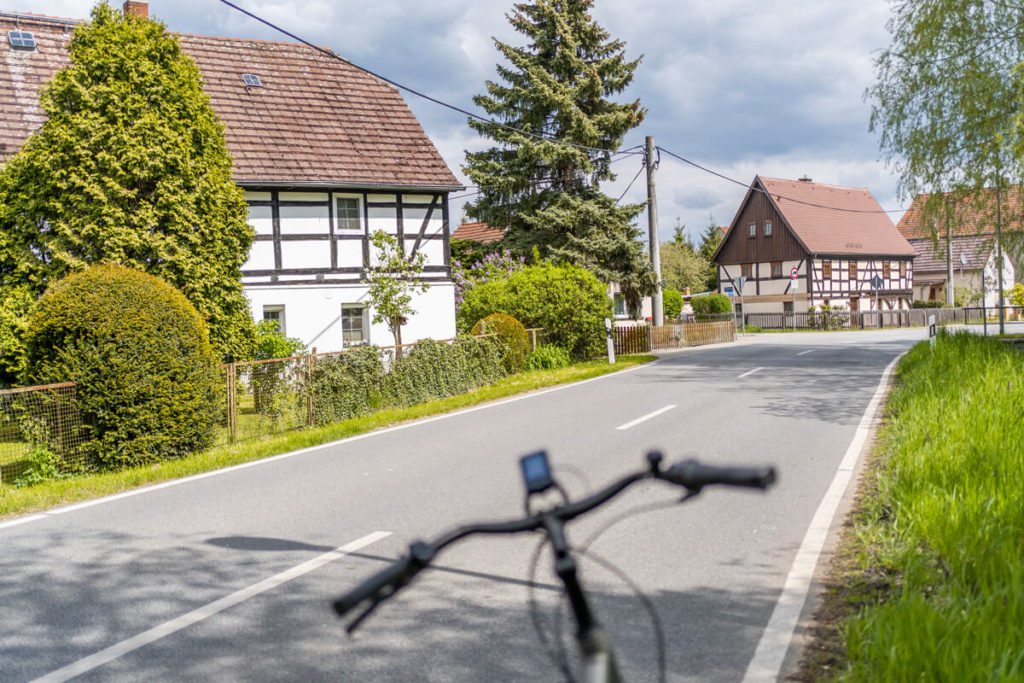
Hotel Recommendations
During our trip through Upper Lusatia, we stayed in two different hotels. In Bautzen, we stayed at the ApartOne Hotel*, which is located right in the heart of the old town. Our room was very tastefully furnished and had a double bed, seating area, bathroom with shower, TV, Wi-Fi, and wardrobe. A balanced breakfast buffet was available next door at the Gersdorffsches Palais.
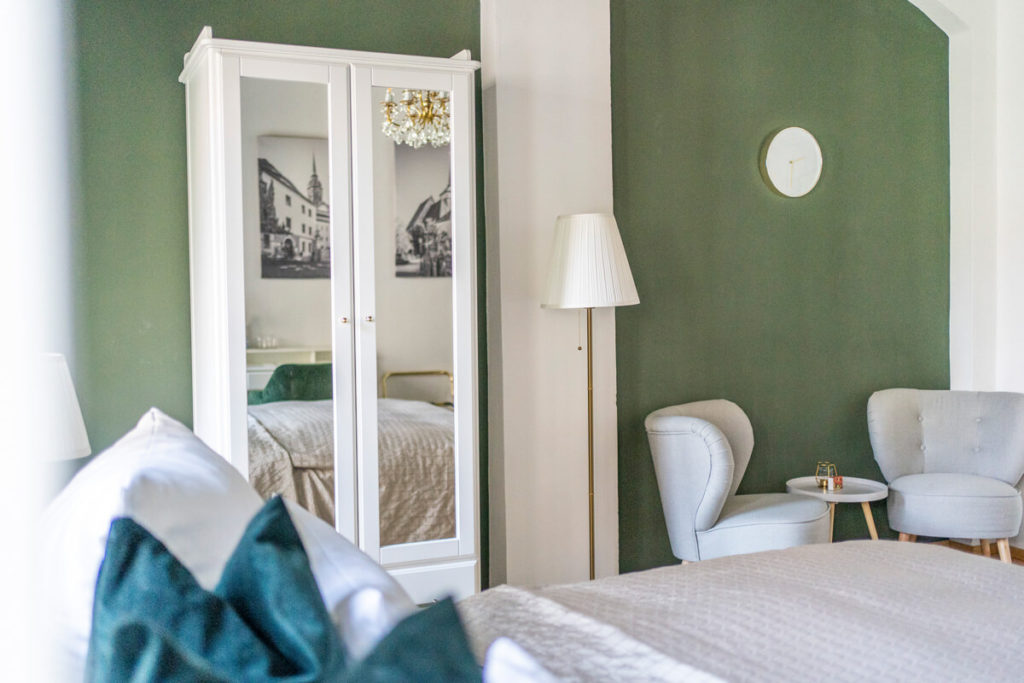
In Bad Muskau, we stayed at the Hotel Am Schlossbrunnen*. This hotel is located just a 20-minute walk from the town center (market square). Our spacious family room was very modern. The breakfast buffet in the morning was small but excellent, and the staff was very welcoming and friendly. The best way to get from A to B is to rent a bike in Bad Muskau (more info here).
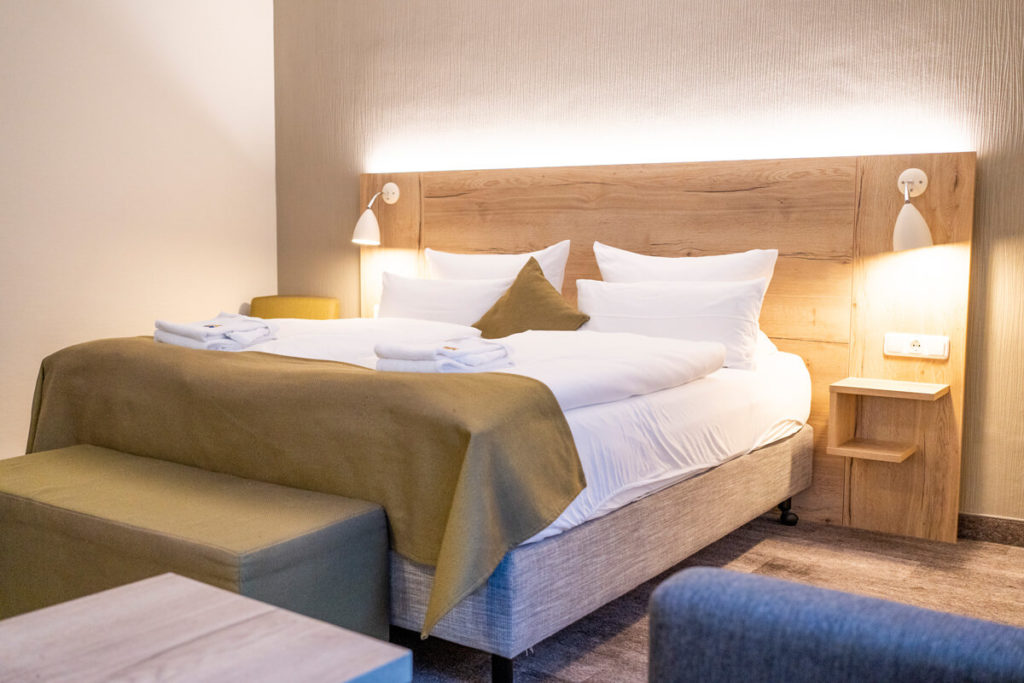
Arrival in Upper Lusatia
As always, we traveled by train. This is and remains the most relaxing way to arrive and depart for us, as we can get some work done during the journey. Our journey took us from Rostock via Berlin and Dresden to Bautzen. But Görlitz, Weißwasser, and Zittau are also easily accessible by train. From Berlin, the train journey to Bautzen takes approximately 2:55 hours and to Zittau 3:30 hours. Book train tickets here*. You can also take your bike on many buses in the region. You can find more information here: Bicycle Transport and Prices.
Conclusion on Upper Lusatia in Saxony
To be honest, we didn’t initially know what to expect in Upper Lusatia. For both of us, the region had previously been a gray spot on Germany’s map. However, we returned with many wonderful impressions and thousands of pictures that reflect what Upper Lusatia is like: diverse, original, and traditional. Overall, a vacation in Upper Lusatia is an experience for all the senses.
The untouched nature, the rich history and culture, and the warm hospitality of the locals make this region a worthwhile travel destination. Whether you’re looking for peace and relaxation, active sports, or want to experience cultural highlights – Upper Lusatia has something for everyone.